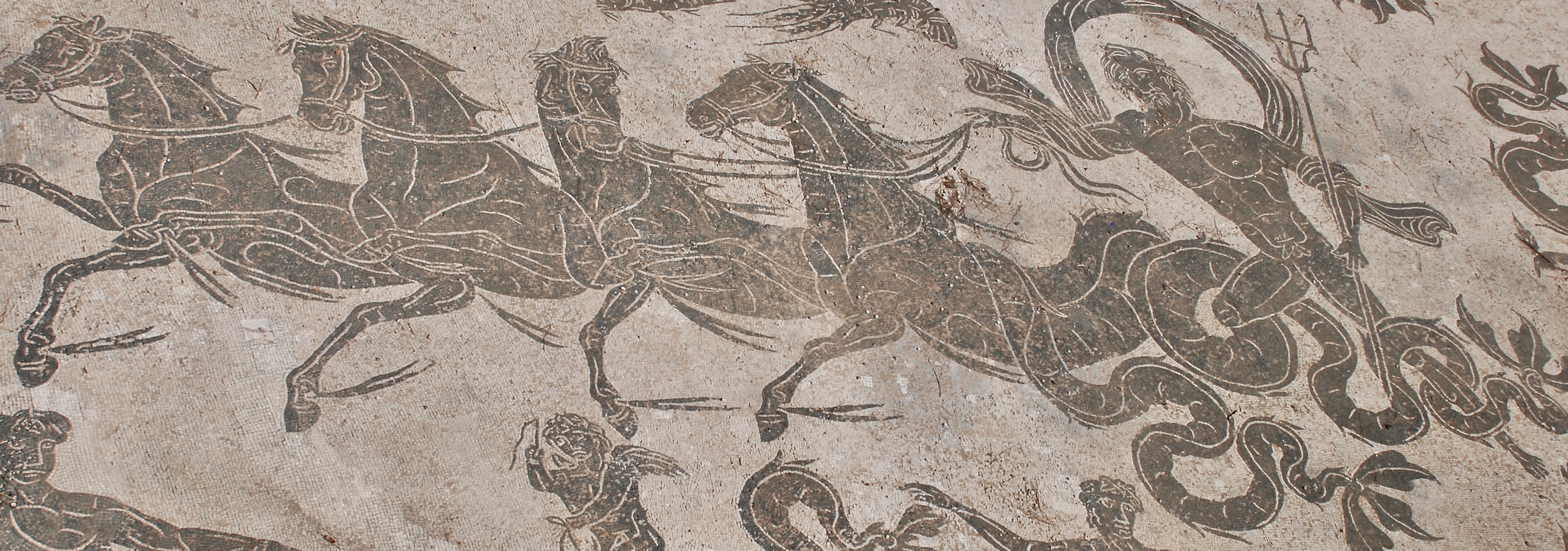Flame Bison
Truly resilient creatures, happy against all the odds to graze on the toughest of grasses and primordial plant life right next to fissures belching out lava and noxious, volcanic gasses. They are true paragons of survival, bred to perfectly suit their environment. Though be warned, if you come across a herd of Flame Bison, Fire Giants will always be nearby.Extract from Ingrid Aevardottir, Corpus Animalium. Huge bovine beasts that are used as the staple herd animal of Fire Giants, for a variety of purposes, to help fill the resource gaps that living in arid, volcanic environments brings.
Basic Information
Anatomy
In their physique, Flame Bison are clearly a mix between cattle and aurochs, which are the two species that they have been bred from. It is thought that Fire Giants cross-bred aurochs for their strength and durability, and cattle that had adapted to living in desert climates to create a beast that was strong, large and sturdy, but also capable of living in an environment characterised by intense heat. Flame Bison are approximately c.8-12ft/c.2.4-3.5m in length, stand about 5-6.5ft/1.5-2m in height and weigh up to a metric ton in weight on average. They have large front shoulders, and a hump of fatty tissue that sits above and behind their heads on their front shoulder, which is used to store water so that it can be saved for dryer times, and allows Flame Bison to survive without water for long periods of time. Their heads are quite large, and both males and females generally have two large horns that grow out of the sides of their foreheads. Flame Bison are hoofed animals.
Their skin, which is a light tan shade in colour is covered with a fine, but very tough covering of long fur, that is designed not so much to keep the creatures warm, as they do not necessarily need this given the climates that they live in, but are to protect them from potential burns from heated debris, ash, and potentially lava. Both their skin, fur and hooves are very heat and flame resistant. It is this fur, as well as their preferred climate that lends them, their name Flame Bison, as it is generally a gingery-red colour, which is instantly recognisable.
Ecology and Habitats
Flame Bison have been specifically bred to be able to survive in the kind of climates that one would find near or in volcanic areas. This means that they are very good at coping with intense heat, and regulating their own body temperatures to compensate for this, however this also means that they are very sensitive to changes in temperature, and even a slight drop in temperature of a couple of degrees or so can see them really start to suffer.
Dietary Needs and Habits
Given that they have simultaneously adapted, and have been specifically bred to survive in arid, rocky, generally volcanic terrain, Flame Bison are not picky when it comes to their diets, and will eat any form of plant life that they come across. This means that most of their diet is generally composed of very tough grasses, mosses and even lichen that require a lot of digesting, which also leads them to swallow small stones to aid in the digestion process. Flame Bison kept as part of a Fire Giant's herd will be fed other manner of fodder by their owners, so that they are not wholly reliant on natural grazing, the Fire Giants of Ahraq Island, for example, feed their Flame Bison seaweed as a dietary supplement. Because of the hot and dry climates that they are used to living in, Flame Bison are also very good at retaining water in their own bodies, which limits how much they have to drink. The longest a Flame Bison has gone without water, on record, is a whole month.
Additional Information
Domestication
Almost all Fire Bison populations are domesticated, and indeed the populations that are not part of a husbanded herd are generally considered to be animals that have escaped, or more likely wandered off, from captivity. As Fire Bison are so intrinsically linked to Fire Giants who have bred them, it is not thought that there are any wild populations of Fire Bison, or at least none that are statistically significant.
Uses, Products & Exploitation
Flame Bison are used to produce numerous things by the Fire Giants who most regularly breed and rear them. Their long, shaggy coats are used to produce wool for clothing, as are their tough hides when the creatures are killed. Because of their natural resistance to heat, Flame Bison leather boots are particularly heat and flame retardant, and are highly useful items for use navigating around volcanic and highly heated areas. In addition, Flame Bison are used to produce milk, and from that other dairy products, and are also used for their meat, which has a deep rich flavour, similar to venison. Fire Giants will always attempt to use every part of a Flame Bison carcass, to get the maximum amount of resources out of it, and this even goes as far as the grinding up of Flame Bison bones to make bone meal, that is not only used to fertilise the grazing land that is used for the Flame Bison themselves, but is also used to make bread, as grain crops such as wheat or rye are generally very scarce in Fire Giant communities.
Lifespan
c.15-20 years
Conservation Status
On a macro scale, Flame Bison would be considered to be uncommon or even rare, as there are very few of them in the wild. However, because they are so intensively kept and bred by Fire Giants, they do exist in large numbers. Even so, because they will only tend to appear in very geographically specific regions, around Fire Giant settlements, few people from outside these communities are likely to have come across them in any great numbers.
Average Height
c.5-6.5ft/1.5-2m
Average Weight
c.2000lb/1000kg
Average Length
c.8-12ft/c.2.4-3.5m




Comments